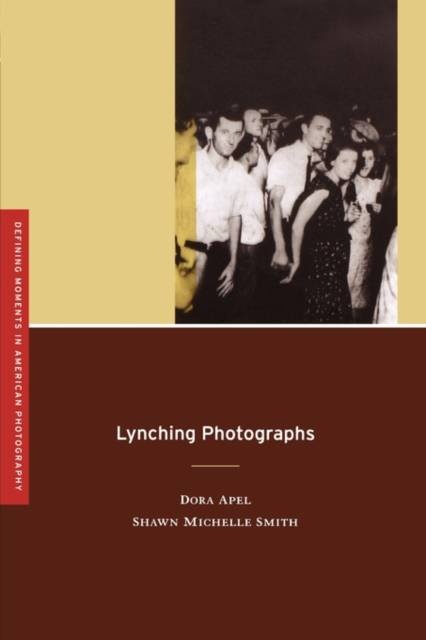
Je cadeautjes zeker op tijd in huis hebben voor de feestdagen? Kom langs in onze winkels en vind het perfecte geschenk!
- Afhalen na 1 uur in een winkel met voorraad
- Gratis thuislevering in België vanaf € 30
- Ruim aanbod met 7 miljoen producten
Je cadeautjes zeker op tijd in huis hebben voor de feestdagen? Kom langs in onze winkels en vind het perfecte geschenk!
- Afhalen na 1 uur in een winkel met voorraad
- Gratis thuislevering in België vanaf € 30
- Ruim aanbod met 7 miljoen producten
Zoeken
Omschrijving
Why do we look at lynching photographs? What is the basis for our curiosity, rage, indignation, or revulsion? Beginning in the late nineteenth century, nearly five thousand blacks were put to death at the hands of lynch mobs throughout America. In many communities it was a public event, to be witnessed, recorded, and made available by means of photographs. In this book, the art historian Dora Apel and the American Studies scholar Shawn Michelle Smith examine lynching photographs as a way of analyzing photography's historical role in promoting and resisting racial violence. They further suggest how these photographs continue to affect the politics of spectatorship. In clear prose, and with carefully chosen images, the authors chart the history of lynching photographs--their meanings, uses, and controversial display--and offer terms in which to understand our responsibilities as viewers and citizens.
Specificaties
Betrokkenen
- Auteur(s):
- Uitgeverij:
Inhoud
- Aantal bladzijden:
- 110
- Taal:
- Engels
- Reeks:
Eigenschappen
- Productcode (EAN):
- 9780520253322
- Verschijningsdatum:
- 5/01/2008
- Uitvoering:
- Paperback
- Formaat:
- Trade paperback (VS)
- Afmetingen:
- 150 mm x 199 mm
- Gewicht:
- 281 g

Alleen bij Standaard Boekhandel
+ 98 punten op je klantenkaart van Standaard Boekhandel
Beoordelingen
We publiceren alleen reviews die voldoen aan de voorwaarden voor reviews. Bekijk onze voorwaarden voor reviews.









